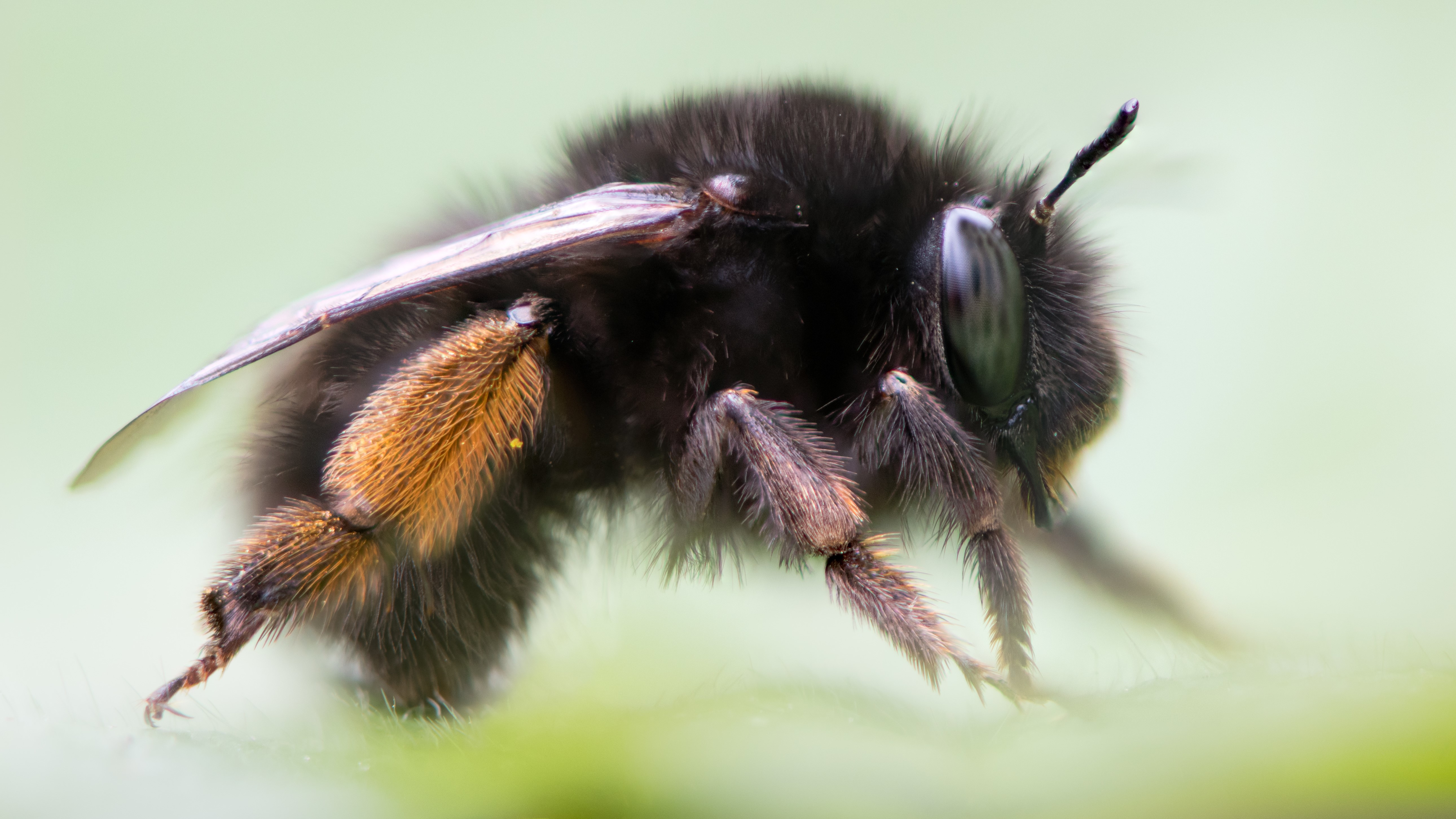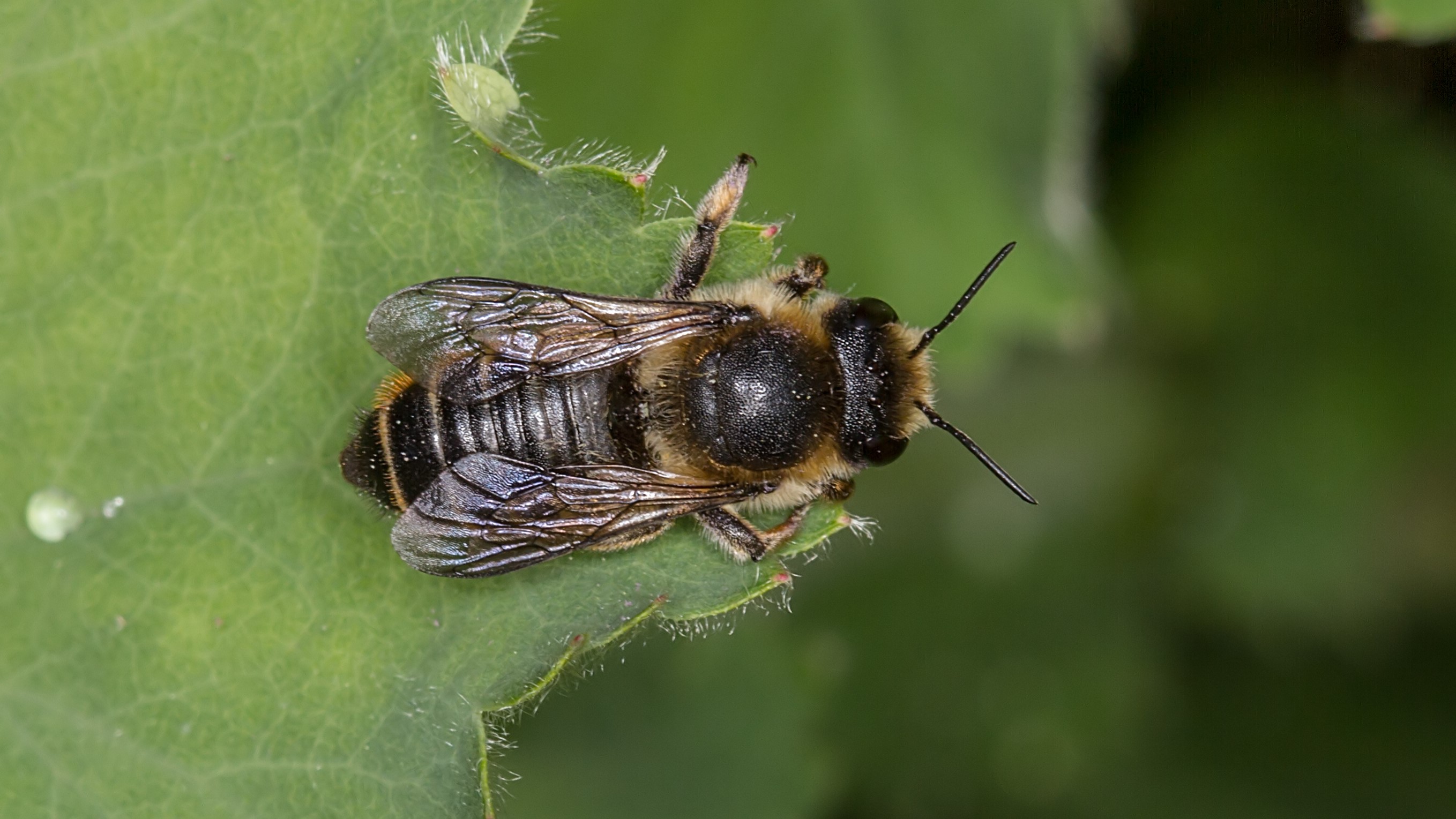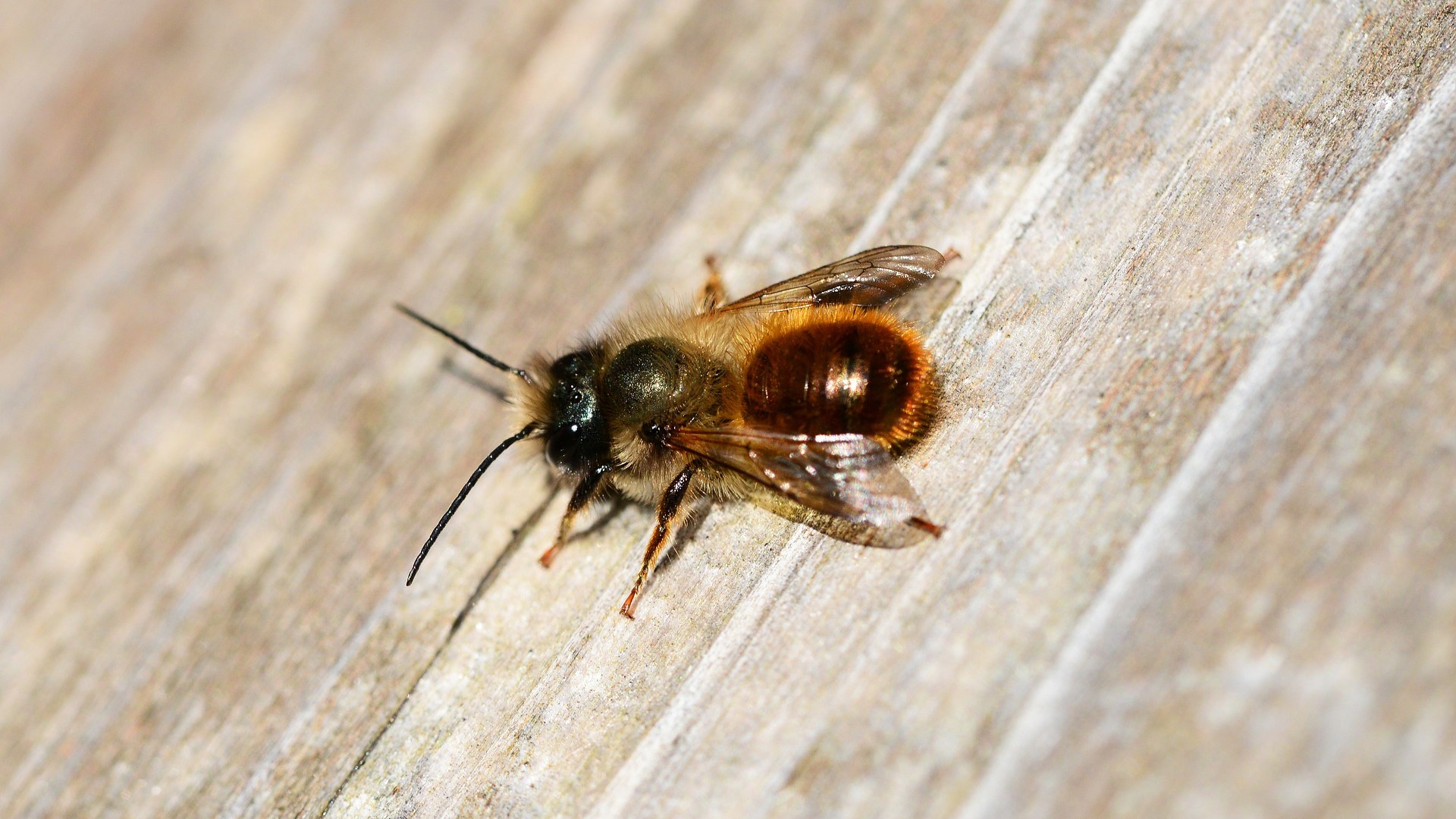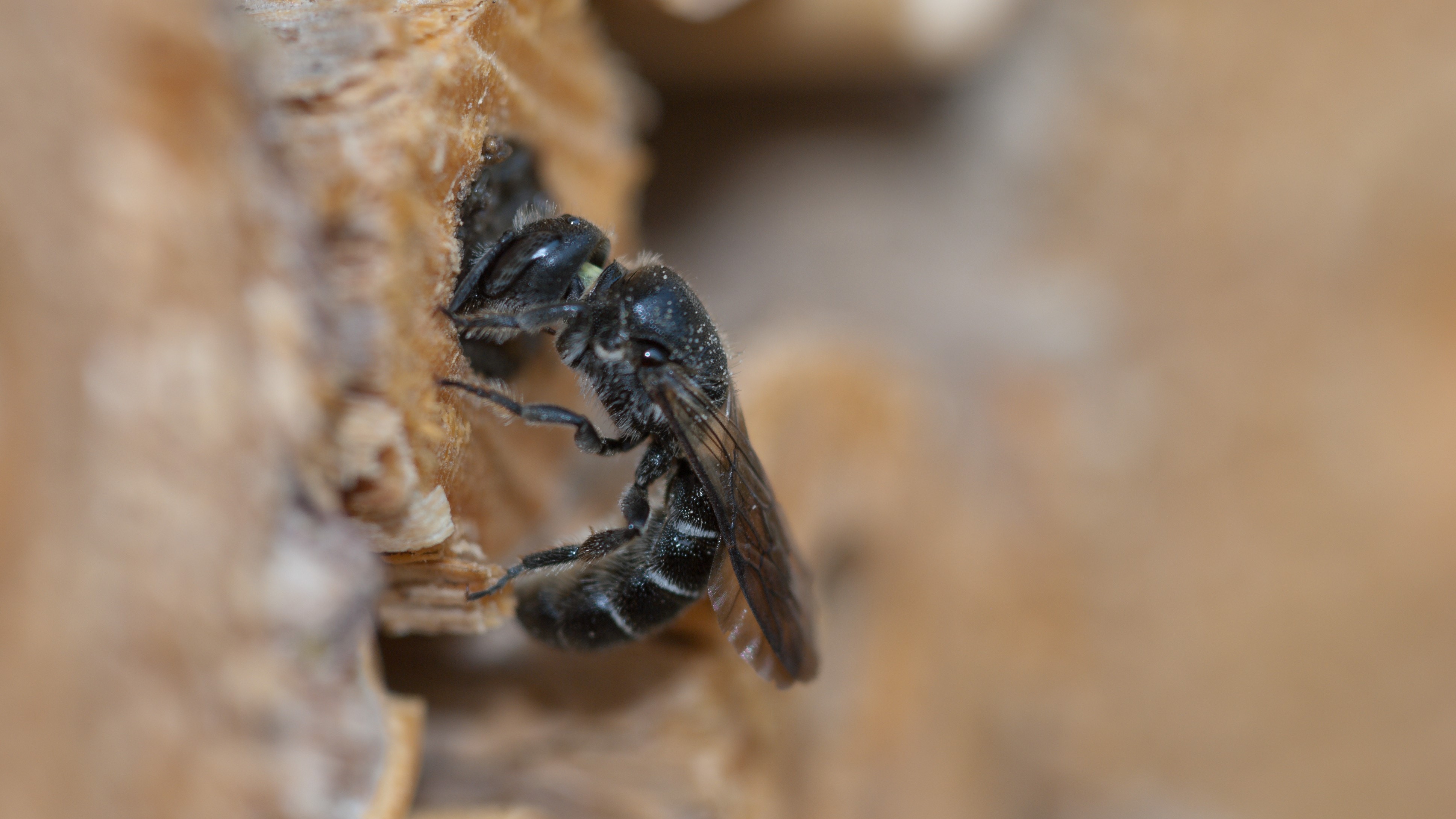Cavity-nesting bees, also referred to as mason bees, are solitary bees that nest in holes in wood, walls and even hollow plant stems. They use mud and other masonry materials to build dividing walls (‘cells’) that isolate each laid egg in the nest.
Cavity nesters can often be distinguished from other solitary bee species by their robust heads and impressive jaws, which they put to use when constructing each cell.
Hairy-Footed Flower Bees
Hairy-footed flower bees are an important pollinators for early spring flowers. The females, like the one above, resemble furry, black bumblebees. The males are more of a brownish-orange colour and stand out from the crowd with their distinctive ginger hairs on their middle legs.
Patchwork Leafcutter Bee
The patchwork leafcutter bees are solitary bees found across the UK. These docile bees are dark in colour with orange-tinged hairs on their underside, making them easily mistaken for honeybees.
Red Mason Bees
Red Mason Bees are solitary bees covered in thick ginger fur with a tuft of white hair on their faces. They are commonly found in gardens across England and Wales and are perfectly safe to have around children and pets.
Small Scissor Bees
Small scissor bees are Britain’s smallest bee species at just six to seven millimetres in length. They’re very slim and have black shiny bodies topped by a disproportionately large head.




